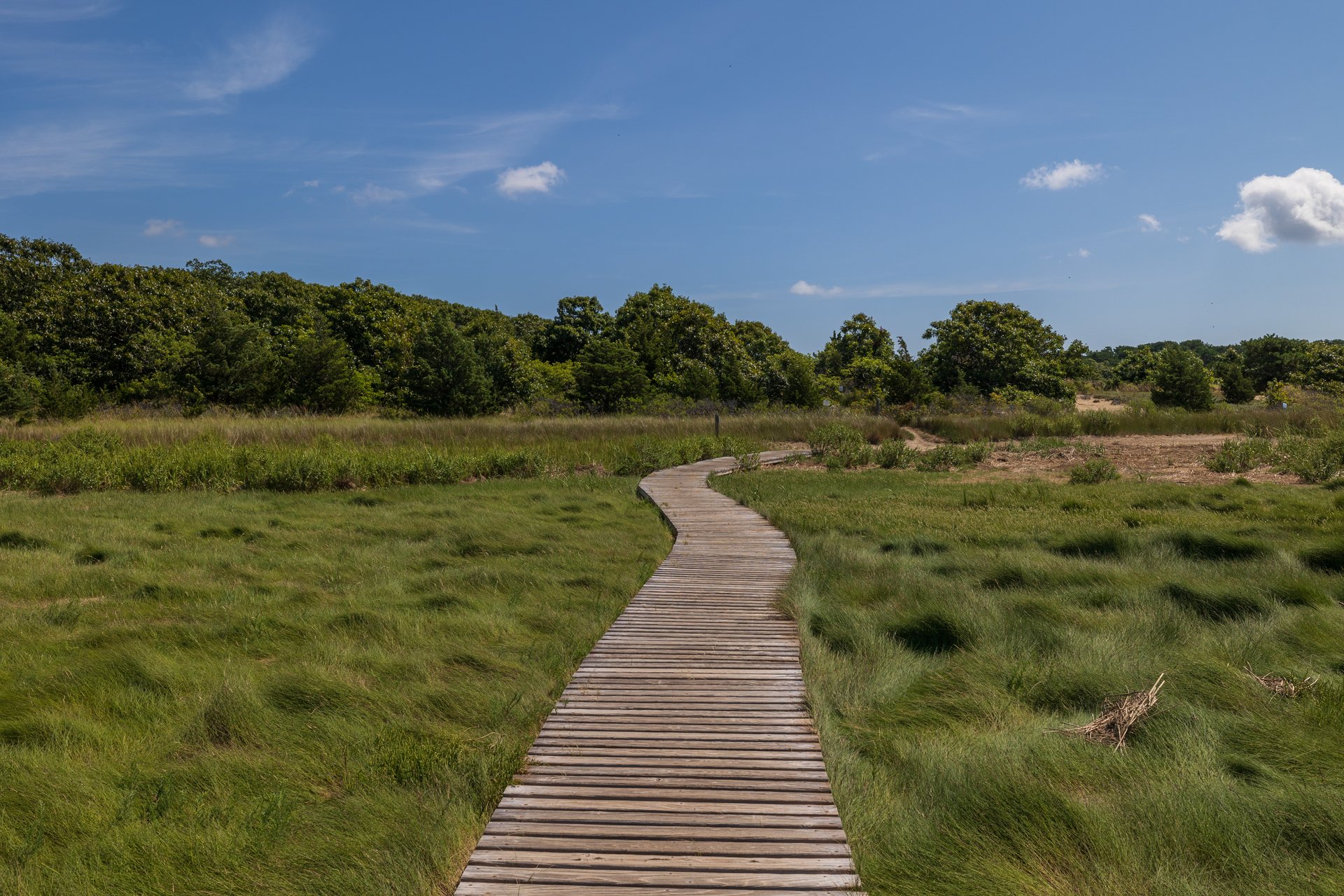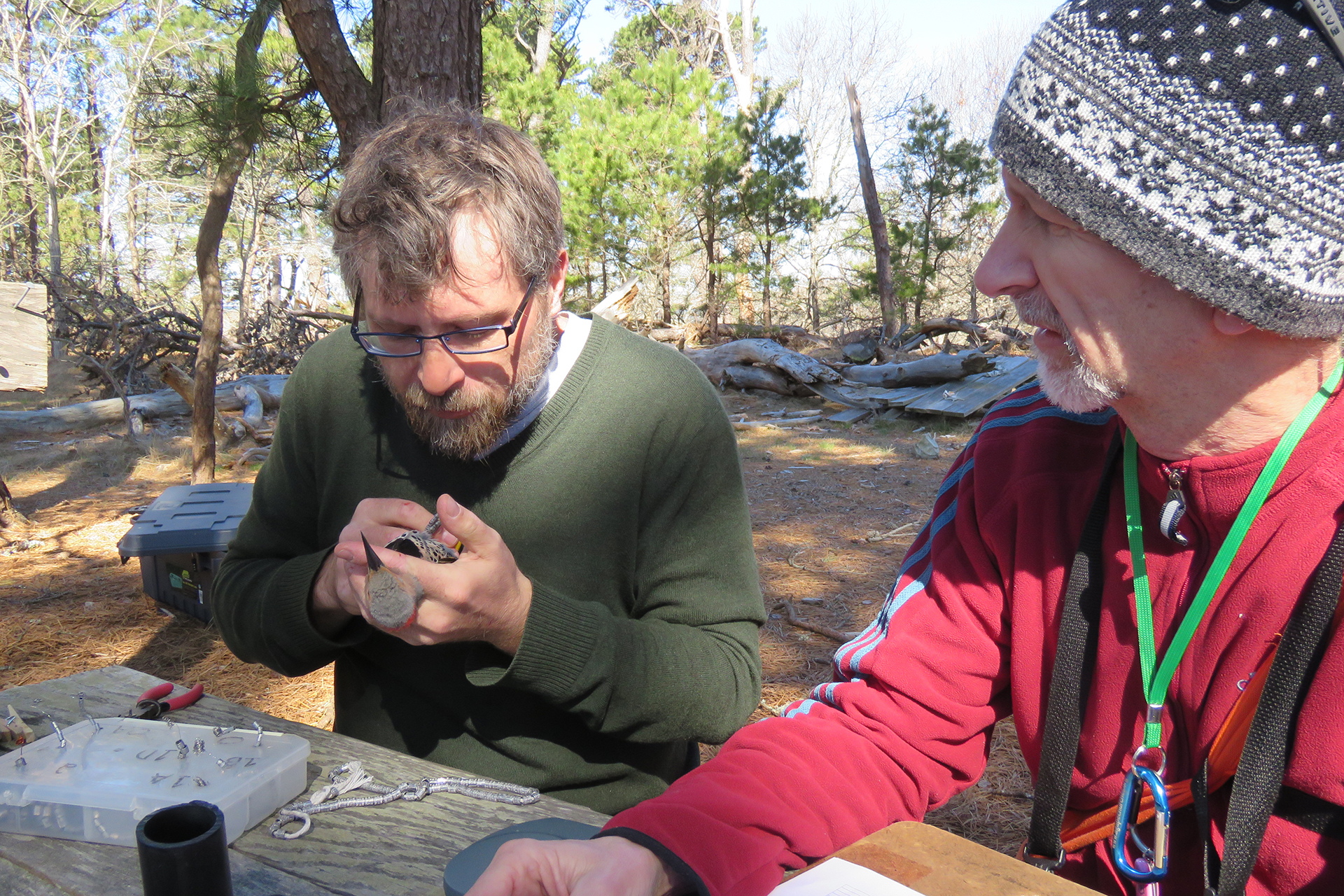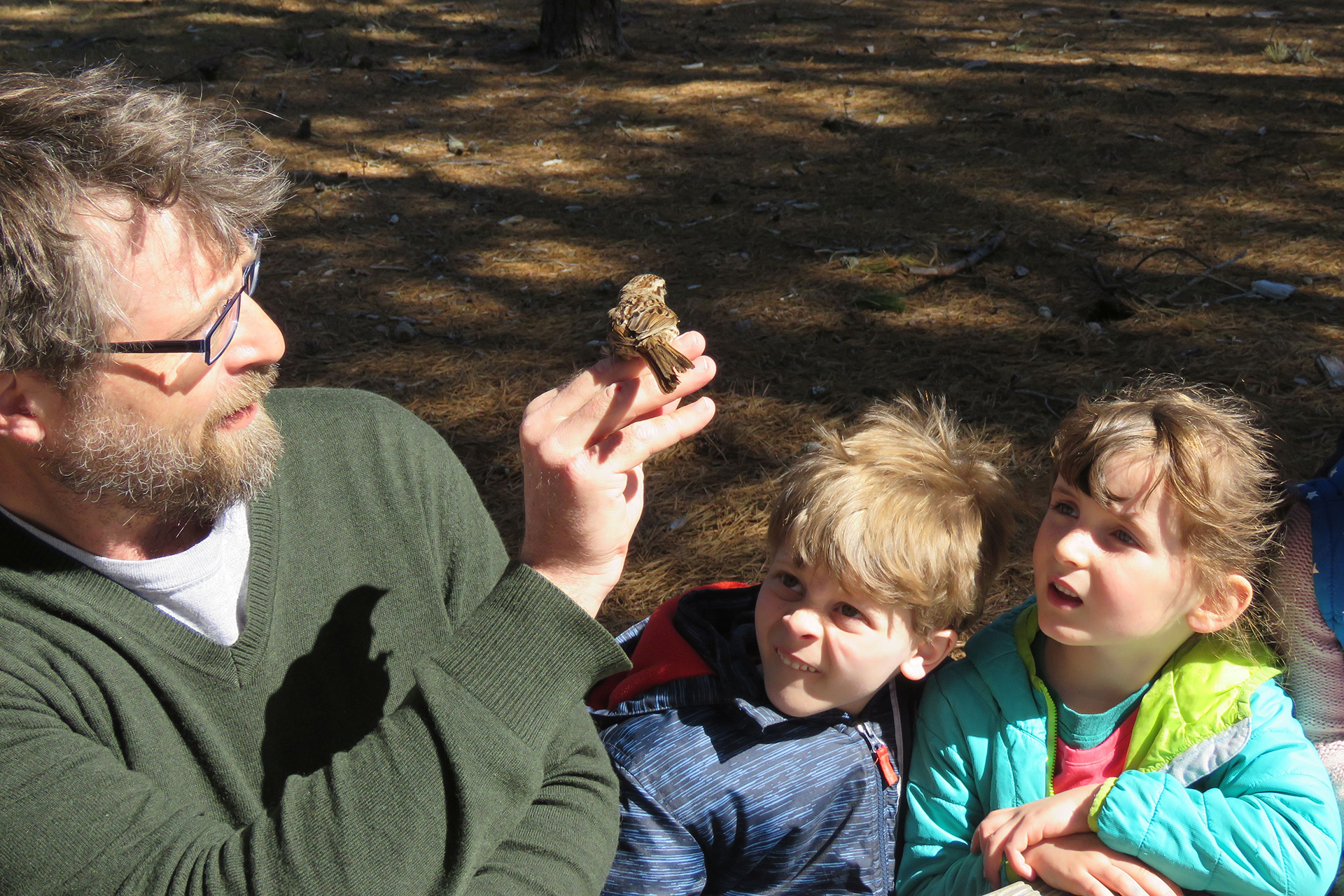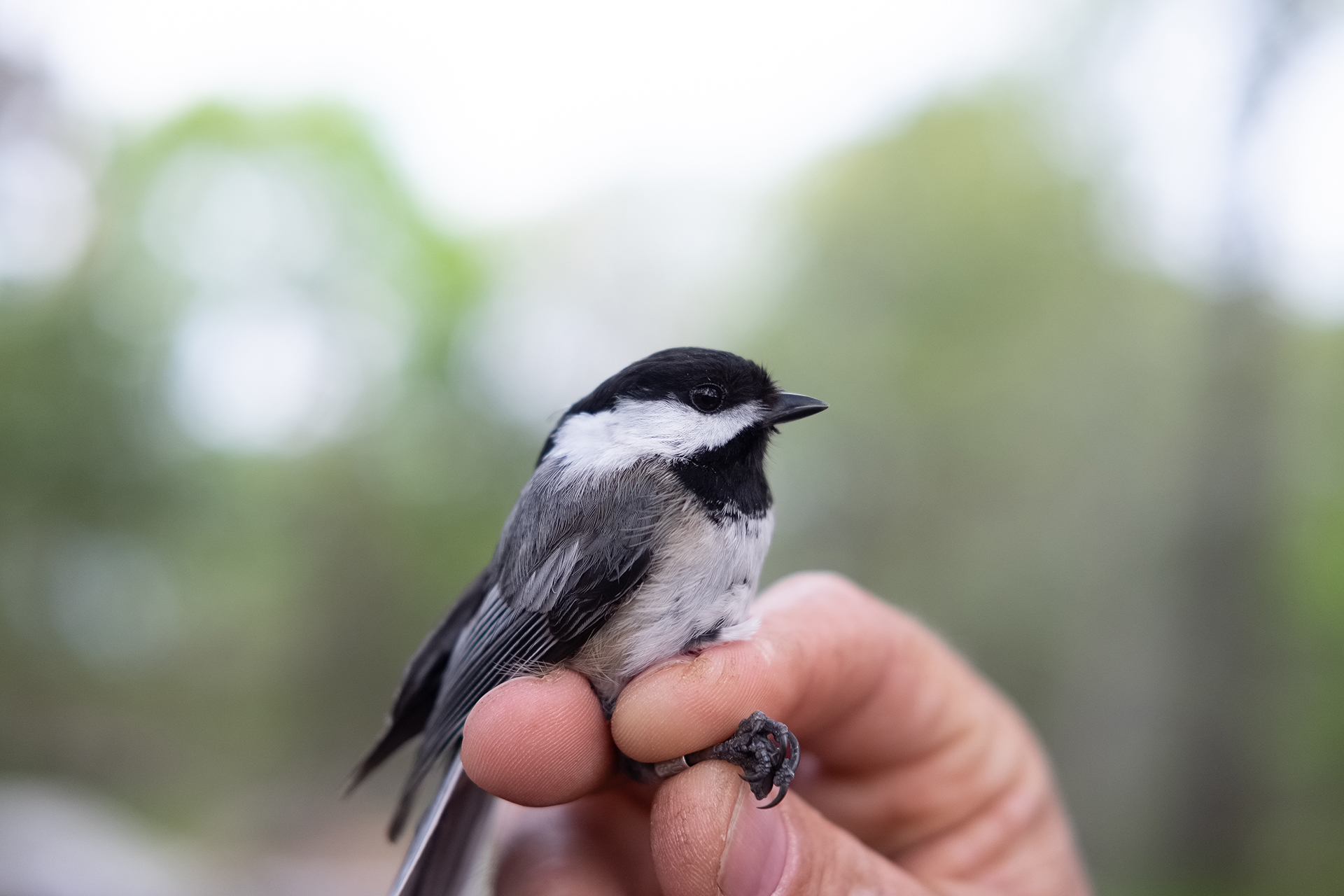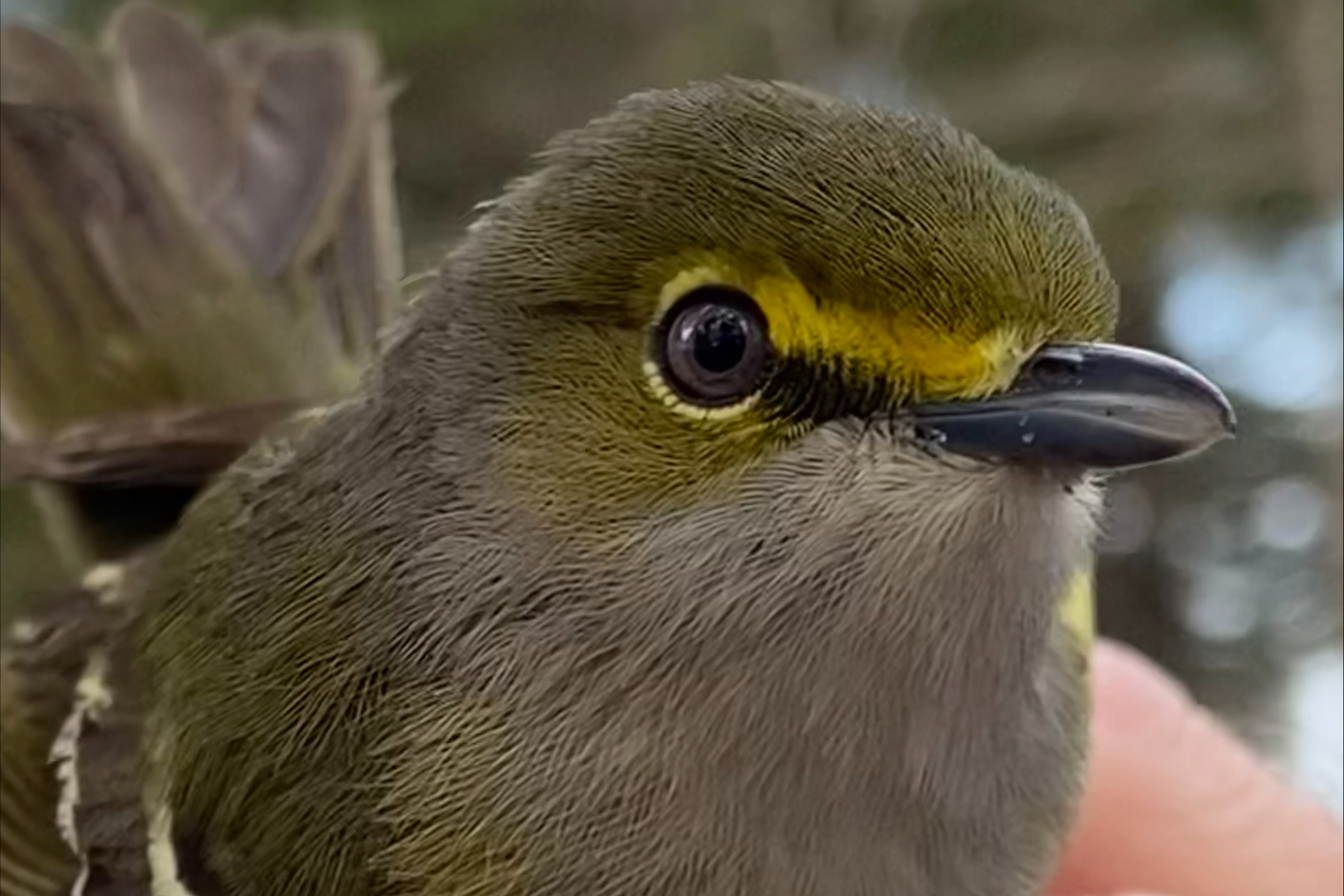Celebrating 10 Years of Bird Banding at Wellfleet Bay
April 29, 2024
The first day of the 2024 bird banding season at Wellfleet Bay featured bright sunshine, warm southwest winds, and 41 banded birds—among the best opening days in the program’s history. A Black-capped Chickadee first banded in 2022 and two White-eyed Vireos north of their breeding range were among the day’s highlights.
Perhaps it is fitting that we were gifted with such a strong start as we celebrate the 10th anniversary of this research project!
Present Day Successes Build on a Rich Past
Today’s project assumes the mantle that is older than the sanctuary itself, reaching back to 1929. Wellfleet Bay was the site of the Austin Ornithological Research Station, one of the largest private bird banding stations in the world and the first location where mist nets—fine-mesh, badminton-style nets—were used for scientific study of birds in North America. After Mass Audubon purchased the property in 1958, bird banding resumed under Erma “Jonnie” Fisk from the mid 1970’s until 1989 with a primary focus on education.
The current banding station began in 2014 under the skill, care, and federal permit of James Junda, a Master Bander and Mass Audubon staff member. The station has been operating every spring and fall since then. Done consistently and over many years, bird banding allows scientists to track significant changes in bird populations, such as species distribution and abundance. The primary goal of banding at Wellfleet Bay is to understand and monitor how migrating and year-round birds use the sanctuary’s varied habitats.
We are honored to pick up where the Austins and Jonnie Fisk left off.
Outreach and Engagement Are Key to Conservation
Dedicated to scientific data collection, the Wellfleet Bay banding station has also excelled and expanded public outreach. Wildlife research cannot exist independently of conservation efforts. In this vein, we inspire conservation by connecting people to birds, increasing knowledge about their fascinating biology and natural history, and building compassion for wildlife and habitats.
Since 2014, thousands of school children and sanctuary visitors have been among those amazed at experiencing songbirds up-close through the public demonstrations and educational programs we conduct. James Junda has also leveraged our social media pages to share exciting content, reaching over 4,600 followers—a tool the Austins certainly didn’t have!
We have also seen the growth of life-long learning and environmental stewardship through this project. Every spring and fall, new field technicians join as important seasonal staff and receive mentorship from James Junda, a role he takes very seriously. Since 2014, 19 field technicians have come through the station, most of whom have gone on to graduate school in related fields.
Our use of volunteers has also expanded. Since its start, 13 dedicated individuals have risen at the crack of dawn on a weekly basis to assist staff with recording data, monitoring nets, and other tasks. In 2023, 8 volunteers—Valerie Bourdeau, Lois Bartels, Teresa Corcoran, Peggy Sagan, Warren Mumford, Frank Mockler, Tod Christie, and Michele Burnat—contributed a whopping total of 498 volunteer hours!
What Stories Birds Tell
What hasn’t changed is that the birds themselves remain the focus of our attention, including what their lives can tell us over time. Fascinating stories are revealed.
Over the past decade, we have encountered 140 species and 27,673 individual birds. Our most common species studied are Gray Catbirds (3,831) and Black-capped Chickadees (3,180).
We have captured several really special birds at Wellfleet Bay who are outside their normal geographic range, including the Swainson’s Warbler, Kentucky Warbler, and Louisiana Waterthrush.
Our daily visual census also allows us to monitor the sanctuary birds that are not captured in the mist nets leading to more rare bird observations, including the Western Kingbird and Tropical Kingbird. Altogether, we have submitted 609 checklists and seen 220 species outside of banding. The observations are posted on eBird and shared to increase the sanctuaries’ presence and attract visitors.
Looking Forward to the Next Chapter
It’s been an amazing run at the banding station these past 10 years and we look forward to continuing our operations for as long as birds migrate and people are inspired by them.
Bird Banding at Wellfleet Bay
See All Bird Banding ProgramsBird Research in Action
-
Wellfleet Bay Wildlife Sanctuary, South Wellfleet
-
Friday, May 2
8:30-9:30am
Adults & Families - 8 - 17
Field School: Coastal Birding for Beginners
-
Wellfleet Bay Wildlife Sanctuary, South Wellfleet
-
3 classes starting
Friday, May 2
3:00-8:00pm
Adults
Bird Research in Action
-
Wellfleet Bay Wildlife Sanctuary, South Wellfleet
-
Friday, May 9
8:30-9:30am
Adults & Families - 8 - 17



